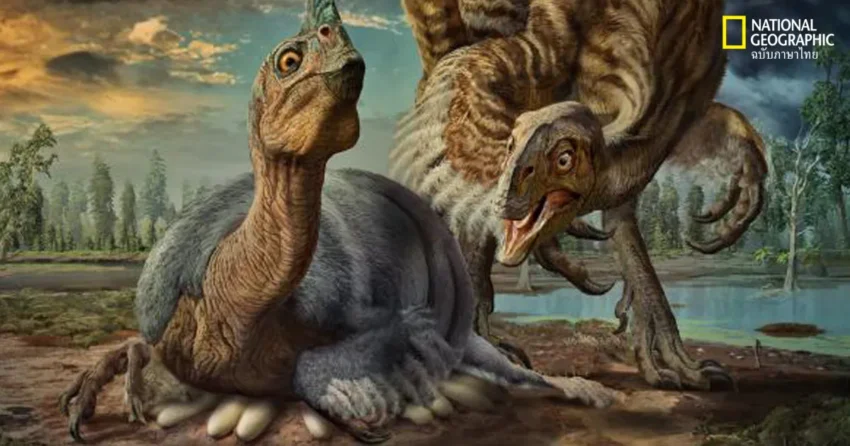The concept of “soul-eating” might sound like something out of a chilling myth or a spine-tingling horror movie, but when paired with the term “Oviraptor,” it becomes a fascinating blend of paleontology and folklore. The Oviraptor, an enigmatic dinosaur from the Late Cretaceous period, has long been misunderstood due to misconceptions rooted in its discovery. Let’s unravel the mystery of this dinosaur and explore why it has earned such a sinister moniker in certain circles.
The Real Oviraptor
The Oviraptor, whose name means “egg thief,” was first discovered in Mongolia in 1924. The name arose because its fossil was found near a clutch of eggs, leading scientists to believe it was stealing them. Later studies revealed these eggs likely belonged to its own species, turning the Oviraptor’s reputation on its head. Rather than being a thief, this dinosaur was probably a devoted parent.
Oviraptors were small to medium-sized theropods, characterized by their beaked, toothless jaws and feathered bodies. They were omnivorous, likely feeding on a mix of plants, small animals, and even mollusks, using their powerful jaws to crack shells.
The Myth of Soul-Eating
The notion of the “soul-eating Oviraptor” doesn’t stem from scientific evidence but rather from a combination of cultural storytelling and its misunderstood legacy. In some speculative fiction and artistic interpretations, the Oviraptor is depicted as a sinister creature, perhaps inspired by its eerie skeletal features and the dramatic circumstances of its discovery.
Adding to the mystique, the Oviraptor’s fossilized remains often show it in brooding postures over eggs, as if protecting a treasure. To ancient storytellers or modern artists with a flair for the dramatic, this could easily be interpreted as a creature guarding not just physical offspring but also something more metaphysical, like souls.
Why the Myth Persists
The idea of soul-eating creatures is a recurring theme across cultures, from European folklore about spectral beings to myths of soul-harvesting deities in African and Asian traditions. The Oviraptor, with its peculiar appearance and initially misunderstood behavior, became an easy target for fantastical reimaginings.
Additionally, popular media often exaggerates real-life creatures to amplify their appeal. The Oviraptor’s unique appearance and its dramatic history make it a prime candidate for transformation into a mythical monster.
Science vs. Speculation
Despite its ominous nickname in some circles, there is no evidence to suggest that the Oviraptor was anything more than a fascinating dinosaur adapted to its ecological niche. Modern paleontology paints it as a creature of complexity, not malevolence—a far cry from the soul-stealing specter of imagination.
Rehabilitating the Oviraptor’s Reputation
The Oviraptor’s story serves as a cautionary tale about the power of names and the persistence of myths. Today, scientists and educators strive to correct its tarnished image, emphasizing its role as a caring parent and a unique link in the evolutionary chain.
In the end, the “soul-eating Oviraptor” is less about the dinosaur itself and more about how humans project narratives onto the unknown. By separating fact from fiction, we can appreciate the Oviraptor for what it truly was: a fascinating, feathered dinosaur whose story continues to evolve.For more information click http://dinorepeat.com

